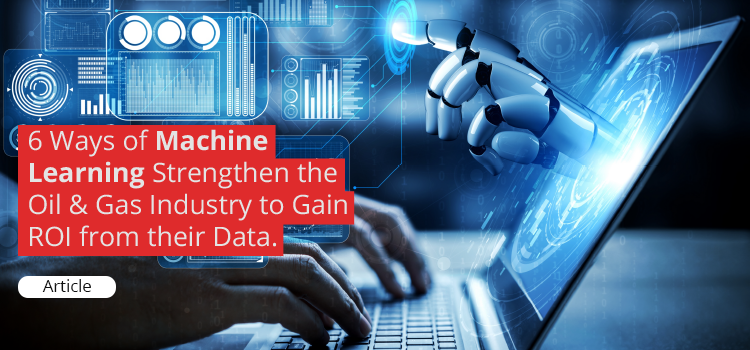Machine Learning is an extension of Artificial Intelligence, this emerging technology has proven to be beneficial to multiple industries by enabling them to gain the ability to automatically learn and adapt according to the desired programming. This technology has the capability to learn from itself and this has helped the Oil and Gas industry largely.
In addition to this, Machine Learning models have helped Machinists gain ROI from their Data.
There are 3 main points on gaining ROI in the field. ML can predict when the malfunctions occur, example being the emission flares released from the gas chamber into the atmosphere and the ratio of solvents to be used. ML can control and regulate this volume of gas being wasted, resulting in improving the ROI.
ML is the foundation to determine what is important and what isn’t in terms of data. With large volumes of data processed, specifically in the field of operations, ML can assist in determining next steps or solutions. This enables the corporation to take another step towards automation which can be a huge ROI generator. ML delivers real-time results and action points. Whether gaining access remotely or in the field, computing data needs to be swift enough to make prompt decisions. ML and cloud computing can send relevant inputs once data is analysed and processed, increasing overall ROI.
Below are different ways in which ML can transform the Oil and Gas industry to gain ROI from Data:
To manage seismic data: ML and data analytics starts by getting seismic data – data collected by sensors, across potential areas of interest for scouting various petroleum sources. Once the information is received, it is processed and analysed to determine processes and get location for drilling and assembling systems. With the data received from these sensors, it can be combined with other data sets, namely old historical research-based data and other operations led back-ups, to determine the amount of oil and gas in oil reservoirs.
Optimize drilling processes: One way to optimize drilling processes is to modify predictive models that forecast potential system failures. As a starting point, the equipment is merged with sensors to collect data during drilling operations. This data, together with the equipment model, operational settings, etc. is a run through Machine Learning algorithms to identify usage patterns that are likely to end in breakdowns.
Improve reservoir engineering: The variety of sensors namely, temperature sensors, acoustic sensors, pressure sensors, etc. can accumulate the data needed for companies to improve production. For example, with Big Data Analytics and Machine Learning, companies can create various management applications to get timely and actionable data on the changes in reservoir or tank pressure, temperature, flow and acoustics to increase insight and control over their operations to provide impetus to performance and profitability.
Utilising Logistics: Logistics in the petroleum industry is very dense and the major concern is to safely transport oil and gas with minimum risk. Companies use the sensor analytics to ensure the safe logistics and transport of their high-risk energy products. ML led predictive maintenance software examines sensor data from pipelines and tankers to detect defects such as fatigue cracks, stress corrosion, seismic ground movements, etc. which allows avoiding accidents.
Predictive Analysis: Oil and Gas enterprises can deploy Big Data and ML led predictive analytics to reduce stoppages and maintenance costs of the refining equipment, thus improving asset management. The steps such as the performance of the equipment is analysed by comparing its historical and existing operating data. Based on the device’s end-of shelf-life standards and failure conditions, the performance prediction is fine-tuned further. Finally, the estimated performance of the equipment is envisaged and presented to maintenance professionals for them to take decisions about, say, replacing this asset.
Optimum utilisation of Big Data, AI, Machine Learning potential to gain ROI: With Big Data Analytics in combination to ML and AI, companies convert enormous datasets into effective oil and gas exploration decisions, reduction in operational costs, extended equipment lifespan, and lower environmental impact. With reduced turnaround time and high accuracy, the return on investment on these exploration projects has increased incredibly. Additionally, by deploying these technologies in all departments there are further chances to maximise profits.












